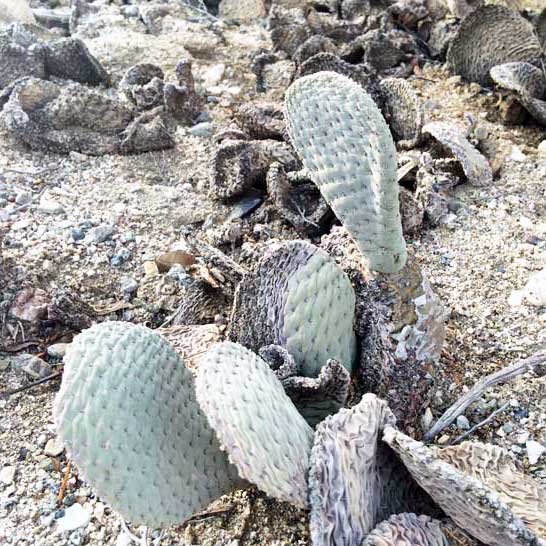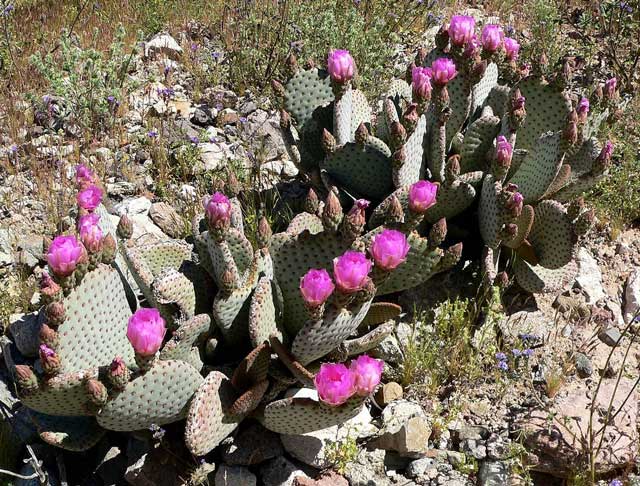Ethnobotany of southern California native plants:
Opuntia: Beavertail Cactus (Opuntia basilaris)

Pads of the beavertail cactus in winter time.

photo credit: Stan Shebs GFDL, CC BY-SA 3.0
Opuntia in full bloom.
Opuntia: Beavertail Cactus (Opuntia basilaris)
Beavertail is a cactus species found throughout the southwest U.S. This species of Opuntia grows mostly in the western Sonoran and Mojave Deserts. Beavertail can grow very close to the ground as seen in the photo on this page, however this cactus also extends up to 60 cm tall.
The plant consists of a collection of fleshy, flat pads, which can range from green to blue-grey in color. These pads are spineless, although they are covered with small barbed hair-like bristles, referred to as glochids. If you brush up against these pads, these glochids can tear into your skin.
From early spring to early summer, beavertail cactus produce flowers that range in color from deep red to pink to a pale white hue.
The Cahuilla people of southern California enjoyed eating the young tender fruits that emerged from these pink showy flowers. Generally, the Cahuilla gathered these fruits between March and June. Fortunately, this cactus species is abundant, so the plant provided lots of food. This was a favorite food item for the Cahuilla.
The buds of a new leaf pad were also eaten. The Cahuilla cooked or steamed these young pads with stones in a hot pit, often for 12 hours or more. The Panamint Indians of the Death Valley region commonly harvested these leaf pads as well as the new stems, or ‘joints’ of the beavertail. They would often dry out this material and store it for the future. Later, when they were hungry, they could boil the dried pads and joints – add some salt – and enjoy their snack.
Meanwhile, the older pads served as material to dress wounds. Their pulp provided a wet salve for bruises, bites and sores.
Large seeds found within ripe flowers were also gathered. These seeds were ground into meal to make flour.
Please return to our main Ethnobotany of southern California page.
On our main ethnobotany page, we present a clickable list of the southern California native plants that became a part of the culture of Native Americans and early European settlers. These plants were used for medicine, food, shelter, drink, tools and art.
Warning: The information about plants on this website is intended for general educational purposes only. The author of this website accepts no responsibility for problems arising from the user’s misidentification, misuse, or use of plants. Please read the full TERMS associated with this website.
